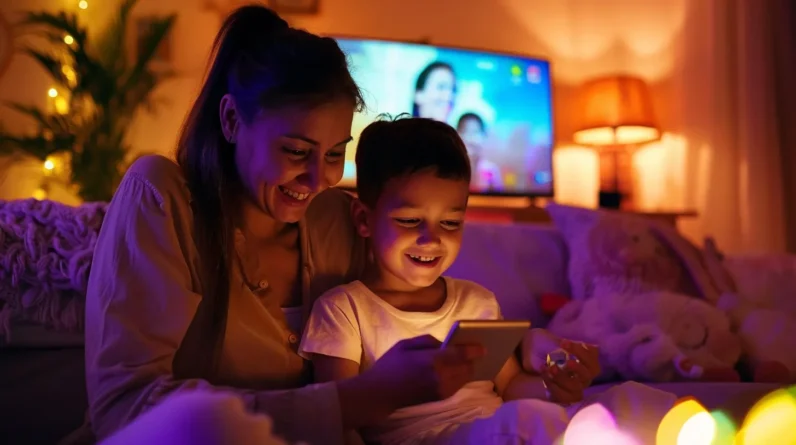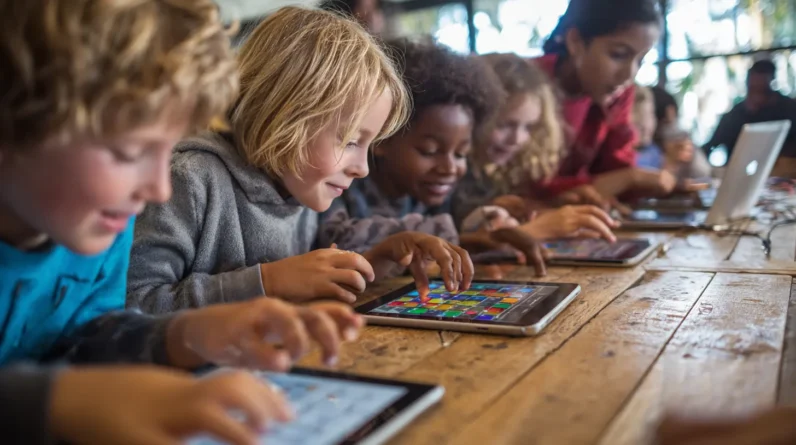
We’re constantly surrounded by smart devices, making it challenging to manage screen time and guarantee a healthy balance for our families. To tackle this, we can set limits and boundaries by defining excessive screen time, establishing screen-free zones, and implementing content restrictions. By utilizing built-in tracking features and parental control tools, we can monitor and analyze our screen time. Let’s discover how we can find the perfect balance and make the most of our smart devices.
Setting Limits and Boundaries With Smart Devices
As we navigate the complexities of managing screen time, setting limits and boundaries with smart devices becomes an essential step in maintaining a healthy balance between technology use and other aspects of our lives. We need to define what constitutes excessive screen time and set realistic goals for reduction. By establishing screen-free zones and times, such as during meals or before bed, we can create healthier habits. We must also consider setting content restrictions to prevent exposure to mature themes, violence, or explicit material. By taking these steps, we can guarantee that our smart devices serve us, rather than controlling our every waking moment. By setting limits and boundaries, we can develop a more mindful and intentional approach to our screen time.
Monitoring and Tracking Screen Time Effectively
Because monitoring and tracking screen time is an essential step in developing healthier habits, we need to utilize tools and features that provide us with accurate and actionable data. We can leverage built-in features or third-party apps to track screen time across all our devices, giving us a thorough view of our habits. Many smart devices offer parental control tools that allow us to set up monitoring systems, receiving alerts and reports on screen time usage. By analyzing these insights, we can identify areas of improvement and make informed decisions about our screen time habits. Effective monitoring and tracking empower us to take control of our screen time, making adjustments that promote a healthier balance between screen time and other aspects of our lives.
Promoting Educational and Productive Screen Time
With the vast array of digital content at our fingertips, we can turn screen time into a valuable learning experience by promoting educational and productive activities. We can make the most of screen time by focusing on content that educates, informs, and inspires our children. Here’s how we can do it:
- Use educational apps that teach new skills, such as coding, languages, or art
- Encourage online learning platforms, like Khan Academy, Coursera, or edX
- Support digital reading habits with e-books, audiobooks, and reading apps
- Engage in creative activities, like digital art, music, or video production
- Participate in online communities that promote STEM, history, or cultural exchange
Exploring Alternative Activities to Screen Time
We’ve established that screen time can be a valuable learning experience, but it’s equally important to maintain a healthy balance between screen time and other activities. That’s why we need to explore alternative activities to screen time that can engage and enrich our lives. We can encourage physical activities, such as sports, dance, or outdoor games, which promote physical and mental well-being. We can also nurture creative pursuits, like painting, drawing, writing, or playing a musical instrument, which foster self-expression and imagination. By incorporating these activities into our daily routines, we can guarantee that screen time is just one part of a balanced and fulfilling lifestyle. This balance is essential for maintaining our physical and mental health, and for cultivating meaningful relationships with others.
Choosing the Right Family-Friendly Smart Devices
As we endeavor to maintain a healthy balance between screen time and other activities, selecting the right family-friendly smart devices becomes essential. We need devices that support our goals, provide a safe environment for our children, and promote responsible screen time habits. When choosing a device, consider the following factors:
- Parental controls: Guarantee the device offers robust parental controls that allow us to limit screen time, block inappropriate content, and monitor activity.
- Age restrictions: Select devices with built-in age restrictions to prevent children from accessing mature content.
- Educational value: Opt for devices that offer educational apps and games that promote learning and cognitive development.
- Screen time tracking: Choose devices that provide built-in screen time tracking features to monitor usage.
- Durability: Select devices that are durable and can withstand accidental drops or spills.
Conclusion
As we navigate the digital age, we must be the masters of our domain, not slaves to the screen. By setting limits, monitoring usage, and promoting educational content, we can break free from the chains of excessive screen time. Like the mythological Hercules, we can harness our strength to tame the digital beast and find balance in our lives. With the right family-friendly smart devices, we can reclaim our time and forge a healthier relationship with technology.







